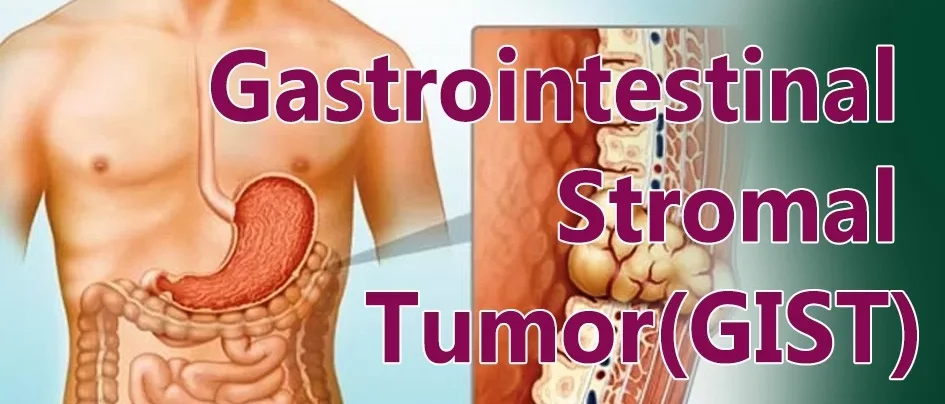Is Gastrointestinal Stromal Tumor Surgery Right for You?

Gastrointestinal Stromal Tumors, commonly known as GISTs, are a relatively rare form of cancer yet a formidable threat lurking within the intricate confines of our digestive system.
Due to their unique nature, these rare, soft-tissue sarcomas have garnered increasing attention from the medical community in recent years.
While the exact global incidence of GISTs can vary, it’s estimated that around 4,000 to 6,000 new cases are diagnosed in the United States each year, giving us a glimpse into the worldwide burden. However, surgery plays a crucial role in their treatment.
This blog explores GISTs, from understanding the risk factors and symptoms to exploring surgical techniques and postoperative care. By the end of this guide, you’ll have a comprehensive understanding of GISTs and the critical role that surgery plays in their management.
What are GISTs?
GISTs are a type of soft tissue sarcoma that primarily originates in the gastrointestinal tract. These tumors are found in the digestive system’s connective tissues, nerves, and muscle layers, including the stomach, small intestine, and esophagus. While GISTs are relatively uncommon, they can be quite life-threatening.
What are its Risk Factors and Symptoms?
While GISTs can develop in anyone, some individuals may have a higher risk. It’s essential to be aware of the risk factors and symptoms associated with GISTs:
Risk Factors:
- Genetic mutations: GISTs are often associated with specific genetic mutations, most commonly in the KIT or PDGFRA genes.
- Age: As mentioned earlier, the risk of developing GISTs increases.
- Gender: Men and women are equally affected by GISTs.
Common Symptoms:
- Abdominal pain or discomfort
- Blood in stool or vomit
- Anemia
- Nausea and vomiting
- Early satiety
- A palpable mass in the abdomen
What are the Diagnosis and Staging of GISTs?
The following are the diagnoses of GISTs:
- Imaging tests: Physicians often start with imaging tests like CT scans, MRIs, and endoscopy to detect the presence of a GIST.
- Biopsy: A tissue biopsy may be performed to confirm the diagnosis, although it’s not always necessary because biopsies can carry risks of tumor rupture.
Staging of GISTs:
The staging of GISTs is crucial in determining the extent of the disease and planning the most appropriate treatment.
GISTs are generally categorized into four stages, from localized to advanced settings, primarily based on their size and extent of spread. The staging system uses T (primary tumor) and M (distant metastasis) categories.
- Stage I: Localized tumors confined to the organ of origin, typically tiny (T1) or slightly larger (T2).
- Stage II: Larger localized tumors (T3 or T4) without lymph node involvement or distant metastasis.
- Stage III: Locally advanced GISTs with sizable primary tumors but no lymph node involvement or distant metastasis.
- Stage IV: Advanced GISTs with distant metastasis (M1).
The mitotic rate, measuring cell division, is also considered in determining risk and treatment planning. Staging guides treatment decisions and provides prognostic information.
What are the Treatment Options for GISTs?
According to Dr. Deep Goel, a well-known Gastrointestinal Onco Surgeon in India with 23 years of specialized knowledge, the primary therapy for GISTs is surgery, which tries to remove the tumor and any afflicted surrounding tissues.
However, other therapies may be employed in combination with or following surgery, depending on the stage and characteristics of the GIST.
- Surgery for GISTs:
Surgery is the cornerstone of GIST treatment. The specific surgical approach depends on the tumor’s size, location, and extent. The two main surgical options are:
- Tumor Resection involves removing the tumor and sparing as much healthy tissue as possible. The goal is to achieve a negative margin (R0 resection).
- Gastrectomy or Bowel Resection: In cases where the tumor is too extensive, part of the stomach or bowel may need to be removed.
- Targeted Therapy:
For GISTs with specific genetic mutations, targeted therapy using drugs like imatinib (Gleevec) can be highly effective. These drugs block the activity of proteins involved in GISTs’ growth.
- Radiation Therapy:
Radiation therapy is rarely used as a primary treatment for GISTs but may be considered in specific cases.
- Adjuvant Therapy:
Adjuvant therapy is given after surgery to reduce the risk of GIST recurrence. It often involves targeted treatment with drugs like imatinib.
What are the Surgical Techniques in GIST Surgery?
Various surgical techniques may be employed based on the location and size of the tumor. These are as follows:
- Laparoscopic Surgery:
Laparoscopic or minimally invasive surgery involves small incisions and the use of a laparoscope with a camera to guide the surgeon. This approach can reduce scarring and shorten recovery times.
- Open Surgery:
Open surgery is sometimes necessary, especially for larger or more complex GISTs. It allows the surgeon to access the tumor and surrounding tissues better.
- Endoscopic Resection:
In certain situations, endoscopic resection may be suitable for GISTs in the upper gastrointestinal tract, such as the esophagus.
What about the Post-Surgery Recovery and Prognosis?
Dr. Goel states, “Recovery from GIST surgery depends on the type of surgery performed and the patient’s overall health. Laparoscopic procedures often have shorter recovery times than open surgeries.”
Therefore, depending on the complexity of the surgery, patients may need to stay in the hospital for a few days or up to a week.
The prognosis for GIST patients varies widely depending on several factors, including:
- The size and location of the tumor
- The mitotic rate
- Genetic mutations
- The success of surgical removal
- Response to adjuvant therapy
What is the Cost of Gastrointestinal Stromal Tumour (GIST) Surgery in India?
The cost of Gastrointestinal Stromal Tumor (GIST) surgery in India varies but generally ranges from INR 2,00,000 to INR 5,00,000 (approximately USD 2,700 to USD 6,800). This includes the surgeon’s fee, hospital charges, anesthesia, medications, and postoperative care. However, the actual cost can vary based on factors such as the hospital, surgeon’s experience, and the type of surgery needed. It’s advisable to consult with healthcare providers for accurate cost estimates.
One satisfied patient of Dr. Deep shared, “I underwent GIST surgery with Dr. Goel, and I couldn’t be happier with the results. His expertise and care made me feel confident throughout the process, and my recovery was smoother than expected.”
Another stated, “After my GIST diagnosis, I was unsure about surgery. However, Dr. Goel explained everything clearly and answered all my questions. The surgery went smoothly, and I’m grateful for his skill and compassionate care.”
Conclusion
Gastrointestinal Stromal Tumors are a challenging and potentially life-threatening condition. Advancements in surgical techniques and targeted therapies have significantly improved GIST patients’ prognosis and quality of life.
Early detection and tailored treatment plans, including surgery when appropriate, are crucial in the battle against GISTs.
By staying informed about the risks, symptoms, and available treatments, individuals can take control of their health and work together with medical professionals to manage this rare form of cancer effectively.
FAQs
Can GISTs be Prevented?
GISTs cannot be prevented, but early detection and treatment can improve outcomes.
Is GIST Surgery Always Necessary?
The necessity of surgery depends on the size, location, and characteristics of the GIST. In some cases, targeted therapy may be sufficient.
How Long Does Recovery Take After GIST Surgery?
Recovery time varies but may range from a few weeks to several months, depending on the surgery’s complexity and individual health.
Can GISTs Recur After Surgery?
Yes, GISTs can recur. Regular follow-up care is essential to monitor for any signs of recurrence.
Are There Alternative Treatments to Surgery for GISTs?
In some cases, targeted therapy or radiation therapy may be used as alternatives to surgery, depending on the tumor’s characteristics and location.
Explore more blogs: Is Anal Cancer Surgery Safe? Understanding the Risks and Benefits

